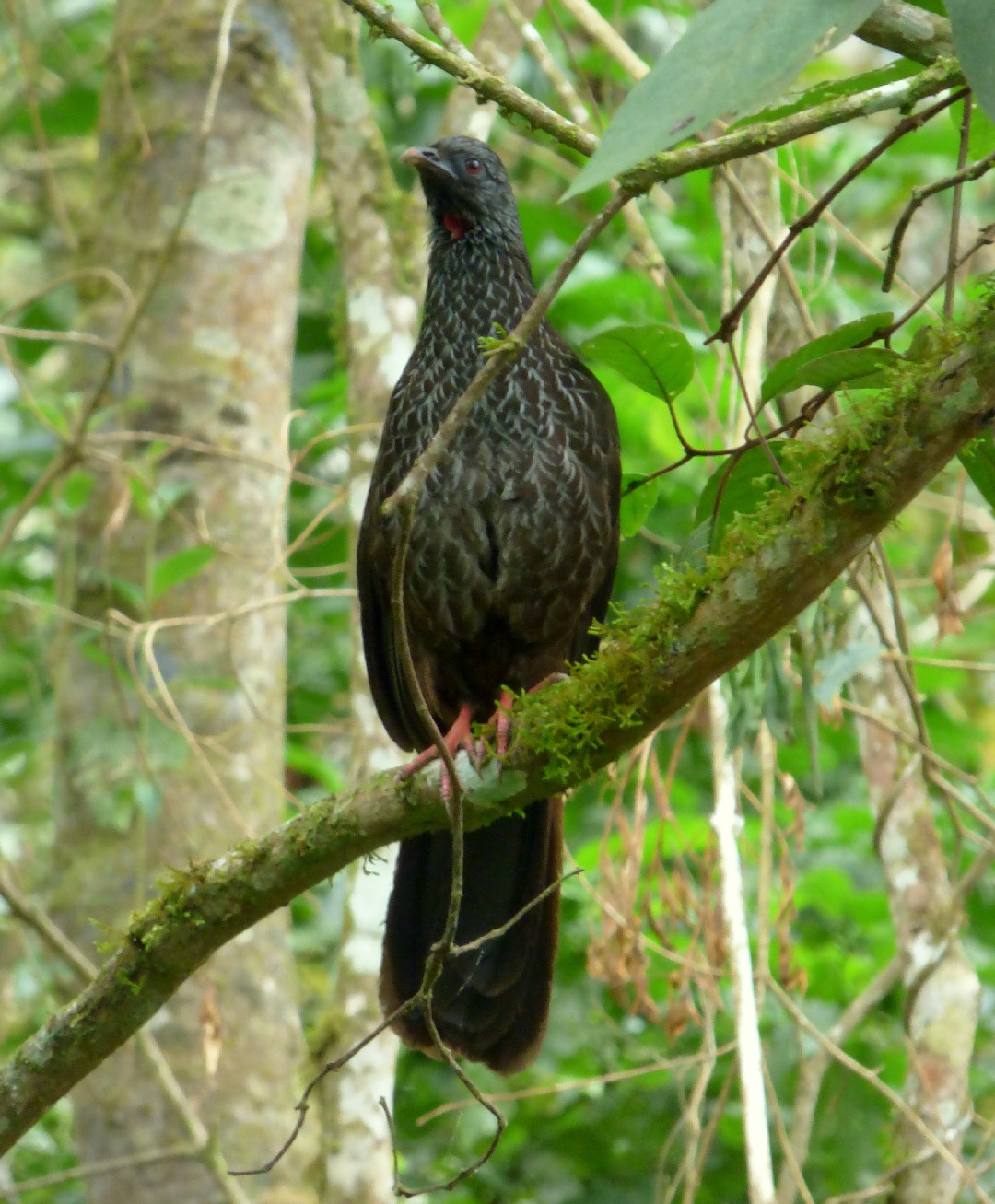Andean Guan
A species of Typical guans Scientific name : Penelope montagnii Genus : Typical guans
Andean Guan, A species of Typical guans
Botanical name: Penelope montagnii
Genus: Typical guans
Content
Description General Info
 Photo By Alejandro Bayer Tamayo , used under CC-BY-SA-2.0 /Cropped and compressed from original
Photo By Alejandro Bayer Tamayo , used under CC-BY-SA-2.0 /Cropped and compressed from original Description
These are medium-sized birds, measuring about 40–58 centimetres (16–23 in) in length and weighing about 500-840 grams (1.1-1.8 lbs). They are long-bodied with thin necks and small heads, and similar in shape to turkeys but more slender and elegant. The plumage is overall brown with whitish edging to the feathers of the head, neck and chest. It has a red dewlap and reddish legs. In the Conover Collection of the Field Museum, there is a hypopigmented female specimen of the subspecies atrogularis taken December 20, 1929, at Pucará (west Ecuador). The forehead, chin and upper throat retain the normal color and the hind part of the body is faintly barred pinkish-buff; otherwise the plumage is white. The iris color was not recorded, making it tough to determine whether this is a case of albinism or leucism. Leucism is more frequently seen in birds – particularly in such pronounced cases –, and hypopigmented cracids are rare in the first place. This particular bird has abraded feathers; prior to its death it seems to have been held in a cage for some time, presumably to show off such a rare specimen. 
Size
61 cm
Nest Placement
Tree
Feeding Habits
Andean Guan predominantly consumes fruits and seeds, favoring sizes of 1-10 mm. Their diet is also supplemented with leaf parts. Feeding habits include foraging in mid to upper levels of fruiting trees, occasionally solo but often in small groups. They are known to forage on the ground for water and food.
Habitat
The natural habitat of andean Guan encompasses thick, humid forests in the mountains that are rich in epiphytes and also includes dwarf forest environments. Andean Guan is typically found in regions with temperate climates and is known to inhabit subtropical mountain zones as well. Occasionally, andean Guan may explore tall secondary growth or open areas that are populated with fruiting trees.
Dite type
Frugivorous
General Info
Feeding Habits
Bird food type

Fruit
Species Status
Not globally threatened.